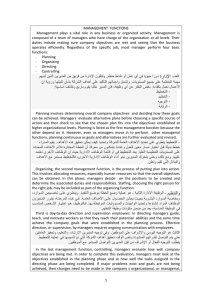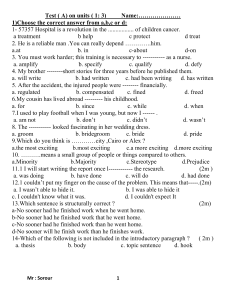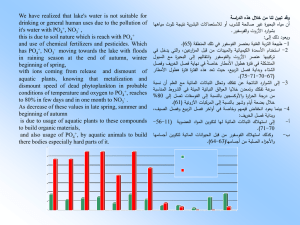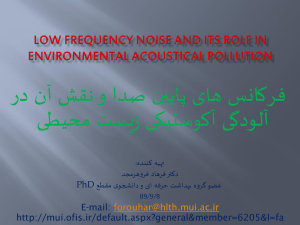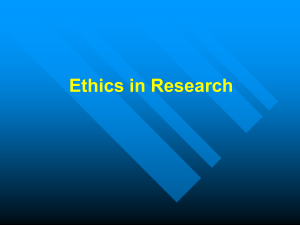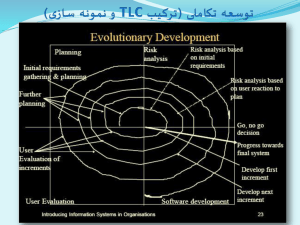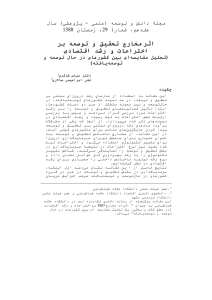Slide 1
advertisement
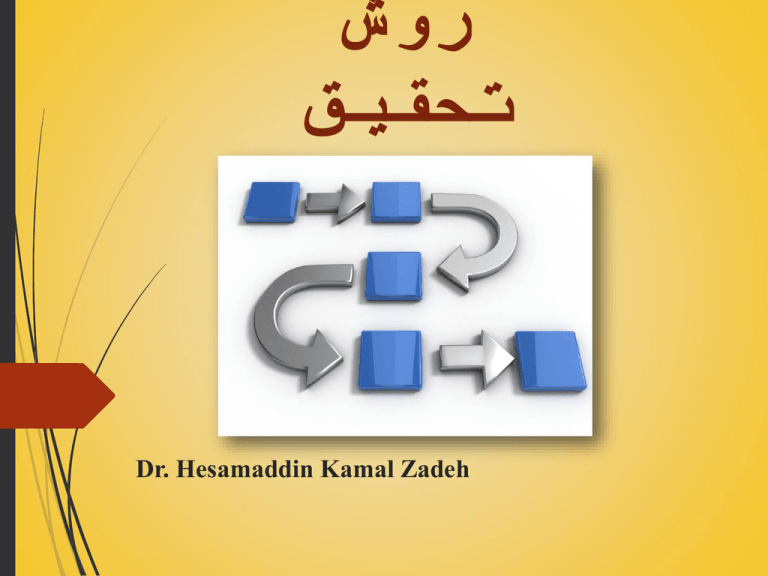
روش تحقیق Dr. Hesamaddin Kamal Zadeh اهمیت تحقیق مفهوم تحقیق انواع تحقيق آشنایی با تحقيق اهداف تحقیق ویژگی های تحقیق تحقيق بنيادي تحقيق كاربردي اکتشافی توصیفی آزمون فرضیه ها آزمایش استراتژی تحقیق فرآیند تحقيق علمي پیمایش موردکاوی منابع انتخاب موضوع تحقيق ارزشیابی موضوع تحقیق بیان مساله استفاده از تجارب متون علمی و منابع موجود نظريه ها تعامل با همکاران و دانشجویان اولویتهای تحقیقاتی (دولت ها ،دانشگاه ها وموسسات پژوهش ی خصوص ی) اهمیت و اولویت قابلیت بررس ی به روش علمی تحقیق عملی بودن عدم مغایرت با اخالق پژوهش عالقه مندی محقق نوآوری تنظیم عنوان تحقیق توصيفي انواع پرسش ها تفاوتي علت و معلولي روشن شدن مساله دالیل انتخاب نوشتن بیان مساله فواید آن بیان مساله هدف کلی نحوه تدوين و ارائه اهداف تحقيق اهداف جزئی خصوصيات اهداف متغیر چارچوب نظری متغیر مستقل) ( Independent variable متغیر وابسته) ( Dependent variable متغیر تعديل كننده) ( Moderator variable متغیر مداخلهگر) ( Intervening variable چارچوب نظری ویژگیهای بنیادی چهارچوب نظری مقیاس اندازه گیری مقیاس اسمی: مقیاس ترتیبی (رتبه ایی) مقیاس فاصله ای مقیاس نسبی (نسبتی) فصل های پایان نامه بیان مسأله تحقیق فصل اول :کلیات تحقیق اهداف تحقیق طرح و تدوین فرضیه و یا فرضیه های تحقیق تعریف تحقیق و تعیین به موضوع تحقی مربوط متغیرهای منابع مطالعه و بررسی فصل دوم :مروری بر تحقیقات مفهومی و عملیاتی آنها انجام شده طراحی یک روش تحقیق جهت جمع آوری فصل سوم :روش تحقیق فصل چهارم: نتایج فصل پنجم :بحث و نتیجه گیری اطالعات و داده های مورد نیاز تجزیه وتحلیل داده ها پاسخگویی به سؤاالت تحقیق و یا آزمون فرضیه ها بحث ,تفسیر ,نتیجه گیری ,جمع بندی و پیشنه فرآیند تحقیق مشاهده ()1 تعریف قلمرو تحقیق تعریف مساله( )3 گردآوری داده های اولیه()2 مصاحبه بررسی پیشینه و چارچوب نظری()4 شناسایی و نامگذاری متغیرها تنظیم فرضیه ها()5 طرح تحقیق علمی()6 گردآوری, تحلیل و تفسیر داده ها()7 استنتاج ()8 تایید یا رد فرضیه ها ،پاسخ به سواالت پژوهش Research Design Theoretical Framework What you want to study about Research Design How are you going to conduct your study What should you do and not to do The main function is to explain how to find answers to research questions تحقيق بنيادي نوع تحقيق تحقيق كاربردي اکتشافی توصیفی هدف تحقیق آزمون فرضیه ها آزمایش استراتژی تحقیق روش تحقیق پیمایش موردکاوی نوع بررس ی افق زمانی واحد تحلیل(جامعه مورد مطالعه) نمونه Sample روش گردآوری داده ها Data Analysis: Detailed discussion of analysis tools نوع بررس ی مطالعه علی Causal محقق می خواهد علت یک مساله را بشناسد مطالعه همبستگی Correlational محقق می خواهد عوامل عمده مرتبط با مساله را جستجو کند مطاله علی Causal When the research questions try to establish a definite cause and effect relationship, the causal investigation is necessary. Example: Does advertisement cause sales? Does smoking cause cancer? آیا مصرف سیگار موجب سرطان می شود؟ مطالعات همبستگی Correlational In most of the business research there are multiple factors that influences one another and the researcher might be asked to identify the crucial factors associated with the problem. This situation needs correlation study to answer the question. Example: Are Advertisement and Sales related? Are smoking and cancer related? نوشیدت الکل و جویدن تنباکو با سرطان رابطه مستقیم دارند؟, آیا مصرف سیگار Time Horizon افق زمانی To answer the research question a researcher may collect data in a particular time and find out the answer to the question she or he may need to collect data at different time periods to answer the question. On the basis of the time involved, we can divide the studies into two categories: 1. Cross-sectional studies مطالعات مقطعی 2. Longitudinal studies مطالعات طولی Cross-Sectional Studies A study can be done in which data are gathered once in order to answer a research question. Such studies are called cross-sectional studies. Longitudinal Studies longitudinal studies the data are to be collected at different time periods Example: study on employee’s behavior before & after a change in top management. Unit of Analysis )واحد تحلیل(جامعه مورد مطالعه The basic observable entity being analyzed in a study and for which data are collected in the form of variables It is an element in a population of a study. The unit of analysis will vary from study to study depends on the purpose of the study or the research questions. A unit may be: 1. an individual, 2. an organization, 3. group of people, or a division or a country and etc. Sample نمونه The subset of units chosen for study from a population is called sample. To be useful to the researcher, the sample must reflect an approximation of the characteristics in the population that it is supposed to represent. A good sample will permit generalization of the findings to the population with a certain level of statistical confidence. Data Collection Method روش گردآوری داده ها Quantitative کمی Qualitative کیفی Data Data are facts, figures and other relevant materials, past and present, serving as bases for study and analysis. Types of Data: Demographic and Socio-economic Characteristics of Individuals: age, race, religion, marital status, education, occupation, income, etc. Behavioral Variables: Attitudes, opinions, knowledge, etc Organizational Data: origin, ownership, objectives, resources, function, performance and growth. Sources of Data Secondary Sources: These are sources containing data which have been collected and compiled for another purpose published records and reports but also unpublished records Documentary, survey, multiple sources Online and manual Primary Sources: are original sources from which the researcher directly collects data that have not been previously collected. are first hand information collected through various sources and methods unique data for your research

